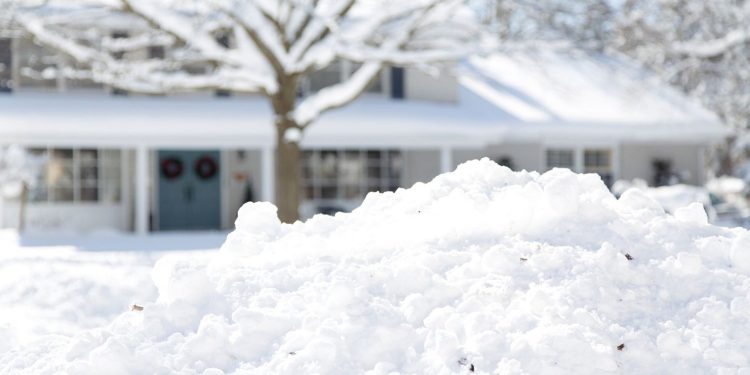Heavy snowfalls can have a larger effect on a home than we tend to think. This is how to protect your home from a snowstorm and mitigate seasonal damage.
As the days slowly get colder and the possibility of snow creeps ever nearer, protecting your home from damage is of the upmost importance. Unfortunately, as pretty as the first few snowfalls can be, they can be incredibly harsh on certain aspects of your property. Snowstorms often lead to broken shingles, frozen pipes, and even cracks in your siding—all of which are costly to fix. Use this guide on how to protect your home from a snowstorm to get ready early and reduce the potential harm.
Cut Overhanging Tree Branches
Strong snowstorms commonly snap low-hanging tree branches and send them falling onto homes. Depending on the size of the branch, this can cause shingles to loosen from the roof or even break the gutters away from their mountings. As such, make sure you dedicate some time to trimming back any longer branches hanging over your roof. They should measure about three feet away from the overhang to ensure your roof is protected.
Keep Gutter Systems Clear
You can also protect your home from a snowstorm by cleaning your gutters and keeping their pipes free of debris. Clogs and ice dams are some of the most frequent gutter problems experienced in the winter—and both happen when water freezes and causes the system to back up. To prevent them, it’s crucial that you get into the habit of regularly clearing away any ice, sticks, or mud that could be blocking your gutters. This way, there’s less opportunity for things to get stuck and freeze in the piping.
Insulate Your Attic
Make sure you insulate your attic before the first major snowstorms roll though. As the heat from your home rises, it can penetrate the roof and start melting any snow that accumulates. When this happens, the water will collect at the base of the shingles and refreeze, creating a large chunk of ice that weights down your gutters. This puts a large amount of stress on this area of the roof, and it can lead to additional costly repairs come springtime. Therefore, installing extra insulation is never a bad idea.



